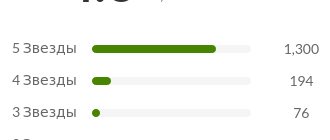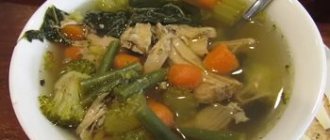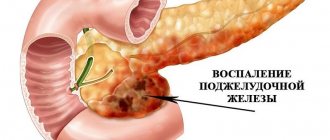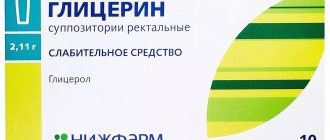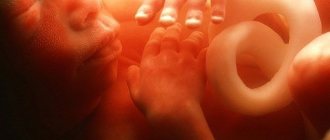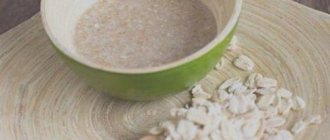The medicine "Maltofer" is a drug used for iron deficiency and normalizes its level. The composition of the drug includes iron (III) complex polymaltose hydroxide. Due to its similarity to natural compounds, it actively enters the blood from the intestines and then accumulates in the liver. The substance accumulates in the bone marrow, causing hemoglobin levels to rise. The drug is available in the form of syrup, chewable tablets or solution. If a more severe form of iron deficiency anemia occurs, the drug is recommended to be used intramuscularly. Children are usually prescribed drops or syrup, and adults are prescribed Maltofer tablets or solution, about which you can hear only positive reviews from doctors.
What is Ferrum Lek
Ferrum Lek is a preparation containing iron in special forms - hydroxide with dextran or polymaltosate hydroxide (depending on the form of release). These are substances that are closest to the biological compound of a microelement contained in the blood.
Thanks to this, it is well absorbed and assimilated by the body, quickly eliminates the deficiency of the microelement, its symptoms and prevents the consequences of pathology.
Most often, patients are prescribed iron in the form of tablets - injections are used when it is necessary to quickly increase the level of the microelement in the blood.
The product is available in the form of tablets, chewable or for oral administration, syrup, solution for intravenous or intramuscular administration in ampoules. The characteristics of absorption and action of drugs depend on the method of their administration (orally or through injections) - the concentration of the active substance reaches its peak within 3-7 days, the half-life is 3-4 days.
Analogs
Instead of Maltofer, the following drugs can be taken:
- "Totema". The solution contains gluconate, manganese, and copper. The product can be taken from 3 months.
- "Ferrum Lek". A similar preparation includes iron in the form of polymaltose hydroxide. The product is produced in the form of syrup, tablets, and injections. Children are prescribed the drug from birth, injections from 4 months, and the solid form from 12 years.
- "Ferlatum". A similar solution includes the protein iron succinylate and is prescribed from birth.
- "Actiferrin". The drug is considered a source of ferrous sulfate, supplemented with serine. It is produced in drops, capsules and syrup. The liquid remedy is given at any age.
- "Tardiferon". These are tablets coated with ferrous sulfate. They are prescribed from 6 years of age.
Before using analogues, you should read the instructions for their use.
Polygynax candles instructions in simple language
The drug Polygynax is prescribed for the treatment and prevention of thrush and vaginal candidiasis.
Treatment with Polygynax should be carried out systematically. Most often, a single course is not enough to completely destroy pathogenic microflora.
Polygynax suppositories are currently available in the following dosages:
- polygynax candles 6
- Polygynax 12 candles price is significantly lower than the previous form
- polygynax
The choice of dosage should begin by taking into account factors such as:
The composition contains only natural ingredients with maximum effectiveness.
The product has no contraindications, the effectiveness and safety of the spray has been confirmed by many doctors. Today Candiston is on sale at a 50% discount.
- severity of the disease,
- the degree of manifestation of unpleasant symptoms,
- duration of illness,
- patient's weight.
For prevention, Polygynax suppositories are used 6. Treatment of vaginal candidiasis, as a rule, begins with the use of Polygynax; if the symptoms of thrush do not disappear within a few days, then switch to the use of Polygynax suppositories
Alternative options
Analogues of “Maltofer” containing the same active ingredient are “Fenuls Complex”, “Ferry”, “Ferrum Lek”. In addition, many drugs are available that contain other forms of iron.
Many parents are concerned about whether it is necessary for their child to take iron-containing medications or whether dietary adjustments can be made. If anemia is diagnosed or the doctor suspects that it occurs in a latent form in a child, then you should not give up Maltofer, since hemoglobin deficiency at a young age can lead to significant negative consequences.
In parallel with drug therapy, it is important to pay attention to the baby’s diet. Up to 6 months, only breast milk or formula is acceptable. Then you can gradually introduce foods containing iron into the menu: beef, liver, buckwheat, herbs, apples, beets, and so on. In addition, it is very important to spend time outdoors with your child often.
It is not recommended to give cow's milk to children with anemia before one year of age, as it interferes with the absorption of iron. The reasons for this are irritation of the intestinal walls and a specific reaction to milk protein (casein).
"Maltofer" is an effective and safe drug for the treatment and prevention of iron deficiency anemia in infancy. It contains iron in a bioavailable form, which is easily absorbed and provides the body with resources for the synthesis of hemoglobin. A prescription is not required to purchase the drug, but parents should not use it on their own. The doctor must examine the child and determine an adequate treatment regimen with Maltofer.
Indications for use
Indications for the use of the drug include diseases and pathological conditions associated with a lack of iron in the body:
- Iron-deficiency anemia;
- decrease in hemoglobin during pregnancy;
- low iron concentration associated with massive blood loss, impaired microelement absorption, poor diet, medication, etc.
With Ferrum Lek therapy, there is a decrease in the clinical signs of the above diseases, as well as an improvement in clinical blood parameters.
Why is iron required?
This component is important for the body. It is used in the synthesis of enzymes and proteins that participate in metabolism. An important blood protein containing iron is hemoglobin (Hb). It is he who combines with oxygen and delivers it to different tissues.
With a lack of iron, hypoxia (oxygen starvation) occurs in all organs and systems. Lack of oxygen has a particularly negative effect on the brain. Iron is found in myoglobin, catalase, cytochrome, peroxidase.
The supply of this component is provided in the form of hemosiderin and ferritin. During intrauterine development, iron reaches the fetus through the placenta from the mother's body. The iron supply in the child’s body increases most actively at 28-32 weeks.
At birth, the neonatal supply of the component is 300-400 mg in a full-term baby, and 100-200 mg in a premature baby. Iron is used for the synthesis of hemoglobin and enzymes, takes part in regeneration, and compensates for physiological removal in the urine and then in feces.
Due to the active growth and development of the child, the need for iron increases. Therefore, reserves are depleted quickly: in a full-term baby by 5-6 months, and in a premature baby by 3 months. The glands are absorbed in the intestines. Only 5% of the iron consumed daily is absorbed from foods. Digestibility is determined by the state of the digestive system. Infants can use medications to compensate for iron deficiency. You should learn in advance about the rules for using Maltofer.
Pharmacokinetics
Suction and distribution
After IM injection, Cmax of iron is achieved in approximately 24 hours.
In the blood, iron binds to transferrin, in tissues it is deposited as part of ferritin, and in the bone marrow it is included in hemoglobin.
In small quantities, the unchanged complex can pass through the placental barrier and small amounts pass into breast milk. Iron bound to ferritin or transferrin can cross the placental barrier and, as part of lactoferrin, enters breast milk in small quantities.
Metabolism and excretion
From the plasma, the macromolecular complex enters the reticuloendothelial system, where it is broken down into its components, iron hydroxide and polymaltose.
Only small amounts of iron are excreted from the body.
Polymaltose is metabolized by oxidation or excreted.
There are no data on the pharmacokinetics of the drug in patients with iron deficiency anemia.
Forms of medicine
The drug is available in the following forms:
- Drops. The medication is presented in a variety of bottles or tubes of 10 ml or 30 ml. According to reviews, Maltofer drops for infants are prescribed more often.
- Syrup. A similar product is produced in bottles with a capacity of 75 or 150 ml.
- Oral solution. It is packaged in 5 ml bottles, which are sold in 10 pcs. in 1 box.
- Chewable tablets. 1 pack contains 10 or 30 tablets.
- Solution for intramuscular injection. 1 box contains 5 ampoules, each containing 2 ml of medication.
There is also a product called Maltofer Fall. These are chewable tablets that include folic acid. This remedy is rarely prescribed for children, since it is intended for pregnant women, since both components are needed to bear the baby.
"Maltofer" for infants should only be prescribed by a doctor if it is really necessary. It is not worthwhile to carry out treatment with such a remedy on your own.
Dosage and features of administration
The dosage, duration and features of treatment depend on the severity of anemia and are determined by the doctor on an individual basis. For children, the drug is usually prescribed in the form of syrup, for adults - in the form of chewable tablets.
It is better to take oral medications (syrup, tablets) only during or after meals to avoid nausea and loss of appetite.
The course of treatment for iron deficiency anemia lasts on average from 1 to 5 months, and the medicine must be taken for several weeks after normalization of hemoglobin levels in the blood.
People with a tendency to iron deficiency are recommended to undergo preventive treatment with Ferrum Lek from time to time.
Rules of application
The Maltofer form for infants should be selected by a doctor. The duration of therapy depends on the reason for which the drug is prescribed. For example, if a drug is prescribed to prevent iron deficiency, the doctor may advise you to drink the drug for 1-3 months. If a child has anemia, the drug is prescribed for 3-5 months at a therapeutic dose, and then for several months at a low dosage.
Usually "Maltofer" for infants is prescribed orally, and injections are performed in rare cases. Injections are given intramuscularly, and their frequency and dose are determined individually. If possible, injections are replaced with drops, syrup or another form of medication. The drug should be given immediately after feeding or during meals.
The tablets are chewed or swallowed and washed down with a drink, but not tea. Liquid products can be diluted with compote, fruit drink, water, juice or other drink (but not tea). How to give Maltofer to a baby? In this case, the medicine is mixed with formula or mother's milk. But if the child does not mind, the liquid product can be given undiluted.
According to reviews, “Maltofer” for infants is prescribed by a doctor, indicating the frequency of administration. The drug can be given in the full daily dose or divided into several times. Daily doses for children of different ages differ. According to reviews, Maltofer drops for infants up to 6 months are given 10-20 drops per day in the presence of anemia, 2-4 drops for prevention.
Contraindications for use
Contraindications to the use of Ferrum Lek include the following diseases and pathologies:
- hypersensitivity to the components of the drug;
- anemic conditions caused by factors other than insufficient iron concentration in the blood;
- diseases associated with an excess of microelements in the body;
- disruption of the process of incorporating iron into hemoglobin;
- severe disorders of hematopoietic processes;
- first trimester of pregnancy (refers to solution for intramuscular administration).
Ferrum Lek can be taken only for established indications and after confirmation of the patient’s pathological condition by clinical tests. Taking medications containing iron without a doctor's recommendation can cause accumulation of the trace element in the body and serious complications.
Polygynax candles: reviews
Those patients who used Polygynax suppositories in strict accordance with the doctor’s recommendations leave only positive reviews. Polygynax candles have the following reviews:
- all the unpleasant symptoms of thrush are quickly relieved,
- rapid healing of the vaginal mucosa occurs,
- After using Polygynax for a long time, repeated symptoms of thrush do not appear.
Patients note that polygynax, the use of which is started in a timely manner, also has a stimulating effect on the immune system.
Unfortunately, only polygynax analogues have these characteristics and have a significantly less effect in the treatment of thrush. Polygynax Virgo is the most effective.
Therapy during pregnancy
Pregnancy is not a contraindication for the use of Ferrum Lek - the active substance does not have a teratogenic effect on the fetus. A decrease in hemoglobin is often observed in women during pregnancy, which can negatively affect the condition of the developing organism. The drug in the form of syrup and tablets is often recommended for pregnant women to prevent complications associated with iron deficiency anemia.
The liquid injection form is prescribed to pregnant women only for vital indications in cases where the expected benefit to the woman’s health outweighs the risk to the child.
Side effects
Ferrum Lek is most often well tolerated by the body, but in some cases side effects from various organs and systems are possible. When taking the drug orally, patients may experience disturbances in digestive function - a feeling of heaviness, a feeling of fullness in the stomach, nausea and changes in appetite, constipation and diarrhea.
Dark coloration of stool when taking iron-containing medications is considered normal and is associated with the removal of excess iron from the body.
Administration of the solution intramuscularly or intravenously may be accompanied by increased blood pressure, joint pain, fever, dizziness, and deterioration in general well-being.
In most cases, side effects associated with taking Ferrum Lek are mild and occur when the instructions, dosage and conditions of administration are not followed. If serious symptoms develop or the condition worsens significantly, you should immediately stop taking the drug and consult a doctor.
The drug "Maltofer": drops for children
Maltofer drops are prescribed if necessary, starting from newborn age. The drug can also be used in premature infants. The medication "Maltofer" can cause abdominal pain, nausea, diarrhea or constipation in a child. Other allergic reactions are also possible. Parenteral use of the drug in children may adversely affect the course of the infectious process. The bulk of reviews about the drug "Maltofer" sound positive. Many people actually note an increase in hemoglobin levels and an improvement in the child’s well-being. Although some young patients experience adverse reactions indicated by the manufacturer to the drug "Maltofer" for children. Reviews about them are extremely rare and talk about an allergic reaction in the form of diarrhea. Other concerned parents note the high cost of the medicine and the not very pleasant smell. In general, reviews of the drug "Maltofer" are positive. The drug in question is very popular.
Sale
You can buy any form of the drug at the pharmacy, but only with a doctor's prescription. Therefore, before purchasing, consultation with a specialist is mandatory. The price of the product depends on the form:
- drops cost 250 rubles;
- chewable tablets (30 pcs.) – 300 rubles;
- syrup (150 ml) – 300 rubles.
Preparations of any form can be stored at home at room temperature in a dry place. The main thing is that the medications are kept out of the reach of children. The shelf life of syrup and drops is 3 years, and other products are 5 years.
Reviews about the treatment with the drug are almost only positive. Parents testify to the effectiveness of the drug, its mild effect, and good tolerability. Allergies and side effects occur rarely, but are still sometimes detected in children. Children tolerate the taste of the drug normally.
Iron overdose
When taking syrup and tablets, an overdose of the active substance is practically impossible, since it is not present in the gastrointestinal tract in free form. If too much of the drug is administered intravenously or intramuscularly, excessive accumulation of iron in tissues and the development of a dangerous condition of hemosiderosis is possible.
WE RECOMMEND THE ARTICLE!
Diazolin helps against body rashes, hives, runny nose and other manifestations of allergic reactions. Read more >>
To eliminate the symptoms of overdose and improve the patient's condition, the drug Deferoxamine is used, which is administered intravenously in a hospital setting. Hemodialysis for iron overdose is not carried out.
Allergy to Ferrum Lek
Allergy to the iron preparation Ferrum Lek is one of the serious contraindications to therapy. This is a serious condition that can cause complications including death. When taking the drug orally, allergies are usually manifested by skin rashes and itching, digestive disorders, and fever.
Allergic reactions to the administration of Ferrum Lek are possible even if the patient has not previously experienced such manifestations.
In the case of intravenous and intramuscular administration of the drug, allergic reactions can be expressed by Quincke's edema and anaphylactic shock, which entails a danger to the patient's health. To eliminate the possibility of unpleasant consequences, the patient should be under medical supervision for 30 minutes after the procedure.
The risk group for developing an allergy to Ferrum Lek includes people with the following diseases:
- bronchial asthma;
- eczema, atopic dermatitis;
- allergic reactions to other iron-containing drugs;
- Crohn's disease;
- progressive chronic polyarthritis;
- decreased ability of the body to bind iron;
- lack of folic acid.
For mild allergic reactions, it is enough to take an antihistamine, but serious conditions (Quincke's edema, anaphylactic shock) require cardiopulmonary resuscitation.
Effective methods for treating food allergies in infants
The body of infants is not at all adapted to certain foods, so at this age food allergies are common in infants.
The rash or redness first appears a couple of weeks after birth. The reaction is due to the presence of hormones that the newborn receives from the mother in the womb.
Spots of this kind quickly disappear. However, food allergies affect not only the condition of the skin, and therefore require treatment with diet or medication.
Symptoms of food allergies
Food allergies can be identified using characteristic symptoms. The disease affects the condition of the skin, intestines and respiratory organs, which does not have the best effect on the overall well-being of the baby.
The table shows the characteristic signs of food allergies.
| Leather | There is a rash, redness, blisters, itching, hives, diaper rash, prickly heat. Quincke's edema may appear. |
| Gastrointestinal tract | There is diarrhea, greenish feces, bloating, colic, vomiting, and frequent regurgitation. |
| Mucous membranes | Discharge from the nasal cavity, congestion, and sneezing appear. The allergy affects the mucous membrane of the respiratory tract, causing the baby to produce sputum, cough and wheeze. Sometimes the mucous membrane of the eyes is affected, which provokes the appearance of conjunctivitis. |
| General state | The baby has a poor appetite. The child is capricious, sleeps poorly, and cries often. |
Some symptoms are similar to those of other diseases. For example, a broken stool can be a companion not only to food allergies, but also to poisoning.
Only a pediatrician can make an accurate diagnosis.
Causes of food allergies in infants
The main cause of food allergies is weak immunity. The protective functions of an infant are not able to fully cope with harmful factors.
An allergy is a reaction of the immune system to an unfamiliar substance. That is why this response of the body appears more often in the first year of a child’s life.
Allergies can appear due to “bad” heredity. If parents are prone to allergic pathologies, there is a chance that the child will also be predisposed to them.
An allergic reaction in a baby occurs not only due to endogenous causes. The environment can also become an allergen. It can be caused by low-quality toys, paints, artificial building materials in the house, and dirty air.
Main sites of allergy rash
How long do food allergies last in infants?
A couple of hours after consuming the allergen, redness appears on the baby’s skin. The intestines make themselves felt within one or two days.
By identifying and eliminating inappropriate products, the development of the disease can be prevented. The spots and allergic symptoms will disappear within the next few hours. But the intestines will need more time to recover - about 2-3 weeks.
The duration of a food allergy is influenced by the following factors:
- How much allergen entered the baby’s body;
- How quickly he was identified and expelled;
- How long or what day does a food allergy last?
- Is the course of treatment prescribed correctly?
- What is the state of the baby's immunity?
The baby's body does not accept chicken eggs, milk and brightly colored vegetables well. Intolerance to these foods often goes away on its own by age four.
However, an allergy to fish, for example, can last a lifetime. This is why they should not be included in a baby’s diet until they are eight months old.
Photo of food allergies in infants
How to treat food allergies?
Having discovered an allergy, the mother of a newborn or infant should not rush to switch to formulas and introduce them during the period when the disease manifests itself. First of all, you need to adjust the menu and adhere to a hypoallergenic diet.
You can get rid of food allergies only if you stop eating the product that caused such a reaction in the body. If it cannot be determined, all possible allergens are excluded for a couple of weeks. Then, little by little, every 2-3 days, they are introduced again one after another.
Sometimes drug treatment may be indicated for a baby. However, some drugs have side effects. Therefore, such medications should be used only on the recommendation of a doctor.
To relieve allergy symptoms, Enterosgel is prescribed; it cleanses and removes the allergen from the baby’s body. From one year of age you can use Fenistal, but it is not effective for extensive skin inflammation.
Urticaria on the face of a newborn
If there is conjunctivitis and tearing, the pediatrician may prescribe Zyrtec. After six months, Fenistil is prescribed, but it has side effects. For disorders of the gastrointestinal tract, the use of activated carbon is indicated.
You should not resort to using antihistamines. Such drugs quickly and effectively act on the skin of a baby affected by allergies, but the result is short-term.
Article on the topic: Cream (ointment) for allergies on the face - symptoms, reviews and treatment
These include "Suprastin" and "Tavegil". Frequent use of these medications causes dizziness and lethargy.
For infants on artificial nutrition, it is necessary to carefully select formulas.
Such food should not contain cow's milk. Be sure to consult your doctor regarding the manufacturer you choose. Early complementary feeding can also cause allergies, and in general, it does not have the best effect on the baby’s development.
Types of food allergies in children
What could be an allergen?
As mentioned above, allergies are most often caused by milk and chicken eggs. However, this is not the entire list of foods that the baby’s body cannot tolerate.
Let's look at the foods that most often cause a negative reaction:
- Whole milk;
- Porridge with milk;
- Mushrooms;
- Chicken and chicken eggs;
- Chocolate and other similar sweets;
- Nuts;
- Black tea, coffee;
- Vegetables and fruits of bright color, citrus fruits;
- Fatty fish;
- Pickles, marinades, hot spices;
- Onion and garlic;
- Foods and drinks containing dyes;
- Carbonated drinks and alcohol;
- Fast foods.
When following a hypoallergenic diet, you must avoid fried and smoked foods. Avoid spicy and very fatty foods. Limit the consumption of processed foods and foods containing chemical additives. It is important to drink 2-3 liters of water per day.
Consider the list of foods you can eat:
- Natural low-fat fermented milk products (sour cream, yogurt, cottage cheese);
- Porridge: buckwheat, oatmeal, polenta;
- Hard low-fat cheeses;
- Fruits and vegetables are not brightly colored;
- Lean meat and fish (pike perch, hake, turkey or beef, chicken is contraindicated) and broths based on them;
- Green tea, water.
You can't resort to regular diets to lose weight.
The daily menu of a nursing mother should contain a complex of vitamins and healthy components. You need to eat a little of everything: apples, milk, meat, cereal.
Allergy prevention
In the first month, the mother of the baby should follow a hypoallergenic diet. Sometimes it is necessary to follow this diet for 2-3 months. When the child’s body has adapted, other foods can be introduced into the diet. During this period, you need to closely monitor whether allergy symptoms arise.
It is better to consume new food from the third month of a baby’s life.
You need to start with small portions; if there are signs of food allergies, the product is removed from the diet. It should be reintroduced gradually, after 3-4 weeks. You shouldn't eat several new foods at once. If allergies occur, it will be difficult to find out which of them caused the irritation.
Try to stick to breastfeeding for as long as possible.
When artificial feeding, choose the mixture carefully; it should be hypoallergenic. It is better to start the first complementary foods after six months. To avoid an allergic reaction, it is recommended to first give vegetable puree or kefir.
Related article: What you need to know about skin testing for allergies in children
It is equally important to lead an active lifestyle with your baby. Do exercises, walk more in the air, swim. This will help strengthen the body's protective functions and improve the child's overall health.
It is easy for a mother to protect her baby if she knows what happens after eating prohibited foods and what a food allergy looks like. You should not get rid of breastfeeding just because you are afraid of the occurrence of such a disease.
Source: //yaallergik.com/allergiya/pishhevaja-u-grudnichka
Features of treatment of infants
Instructions for use in this case require caution and attentiveness. The baby is given drops or syrup, which can be mixed with slightly sweetened water.
What to do if a child is given formula? Many people are interested in this question, because it is not always convenient to add maltofer syrup to the mixture. Many mothers advise giving the medicine half an hour before feeding, but it should not be added to the mixture - babies can often spit up, be capricious and cry.
Pediatricians also do not recommend mixing the mixture and maltofer. It is better to give the drug half an hour or an hour before meals. You can do it differently: give the mixture first, and only then the drug. Do not be afraid that the baby will refuse - the syrup mixed with sweet water is easily digestible.
You can try adding a little medicine to the mixture and give it to the baby. It is necessary to monitor his reaction: if everything is normal, you can continue to carry out treatment or prevention in this way.
Reviews about maltofer are good. Bad reviews are mainly caused by incorrect dosage or cases where the child has developed an allergy. Individual intolerance to the product should not be ruled out.
Analogues and substitutes
Ferrum Lek is not the only iron-containing drug used in the treatment of anemic conditions and decreased hemoglobin. There are many analogues that differ in the composition and biological form of iron, as well as in cost and application features.
| A drug | Active substance | Manufacturer | How much does it cost (RUB) |
| Dextrafer | Iron oxide dextran complex | Health, FC, LLC, Ukraine | 1860 |
| Likferr 100 | Iron(III) Oxide Polyhydrate | Samrud Pharmaceuticals, India | 1500 |
| Maltofer | Iron (III) hydroxide polymaltose complex | Vifor (International) Inc., Switzerland | 505 |
| Sorbifer Durules | Iron (II) sulfate anhydrous, ascorbic acid | Egis, Pharmaceutical Plant, JSC, Hungary | 360 |
| Feroxide | Iron (III) hydroxide sucrose complex | Help S.A. for M. Biotek, Greece/UK | 1600 |
| Ferromed | Iron (III) hydroxide polymaltosate | Med-interplast, Republic of Belarus | 440 |
| Ferropol | Iron (III) hydroxide polymaltosate | Medana Pharma, Poland | 600 |
Since Ferrum Lek analogues contain trace elements in different forms, if you need to replace one drug with another, you should consult your doctor.

